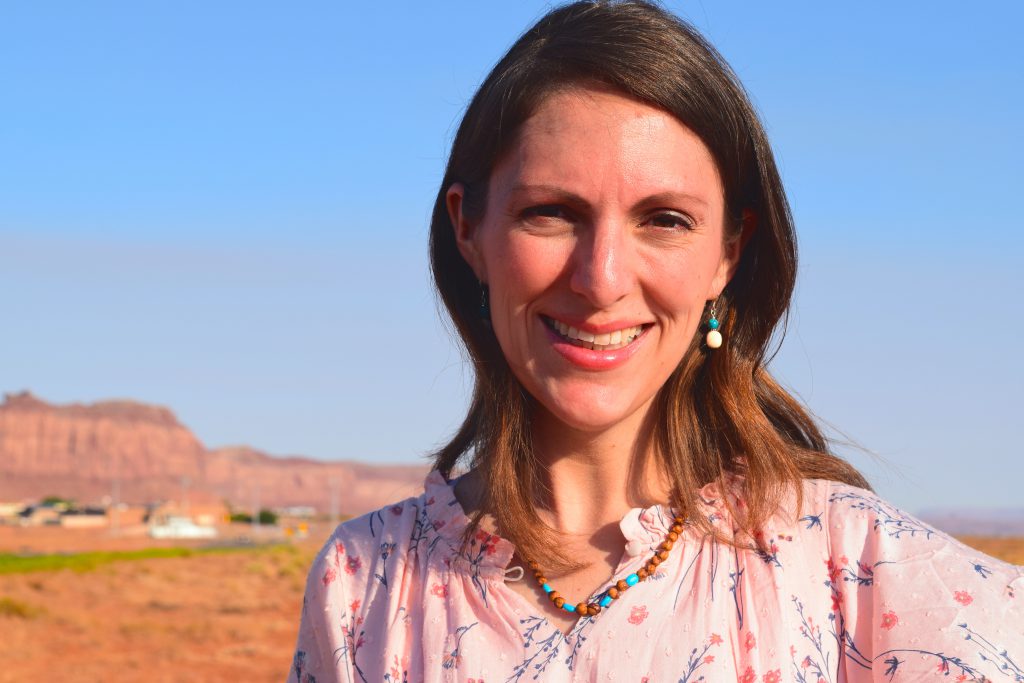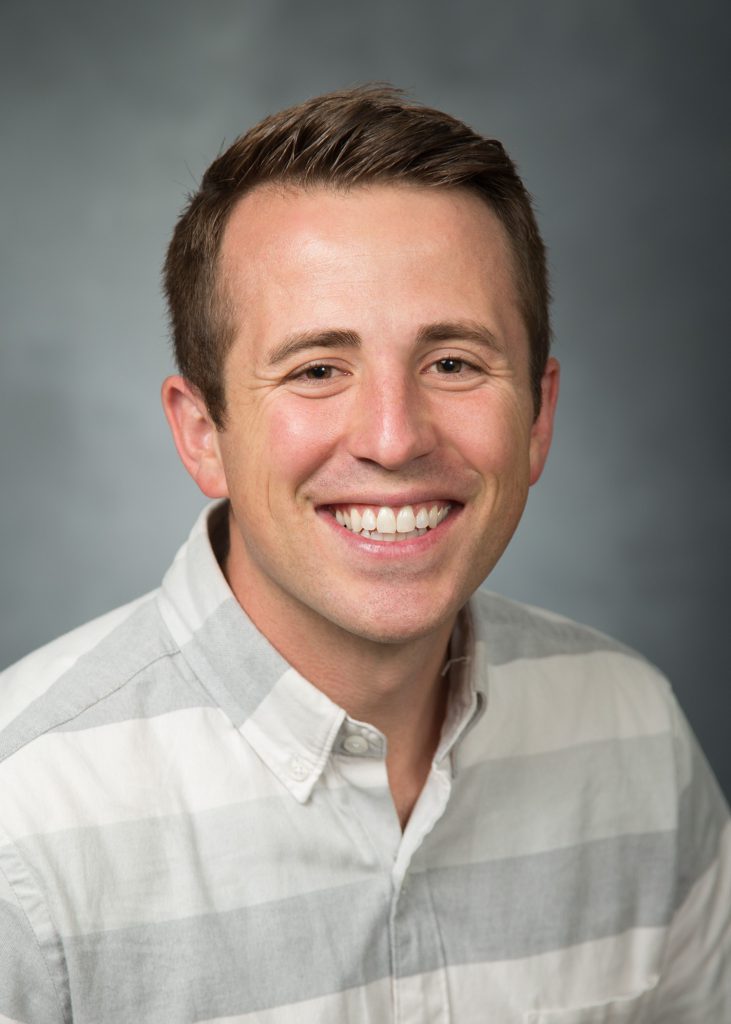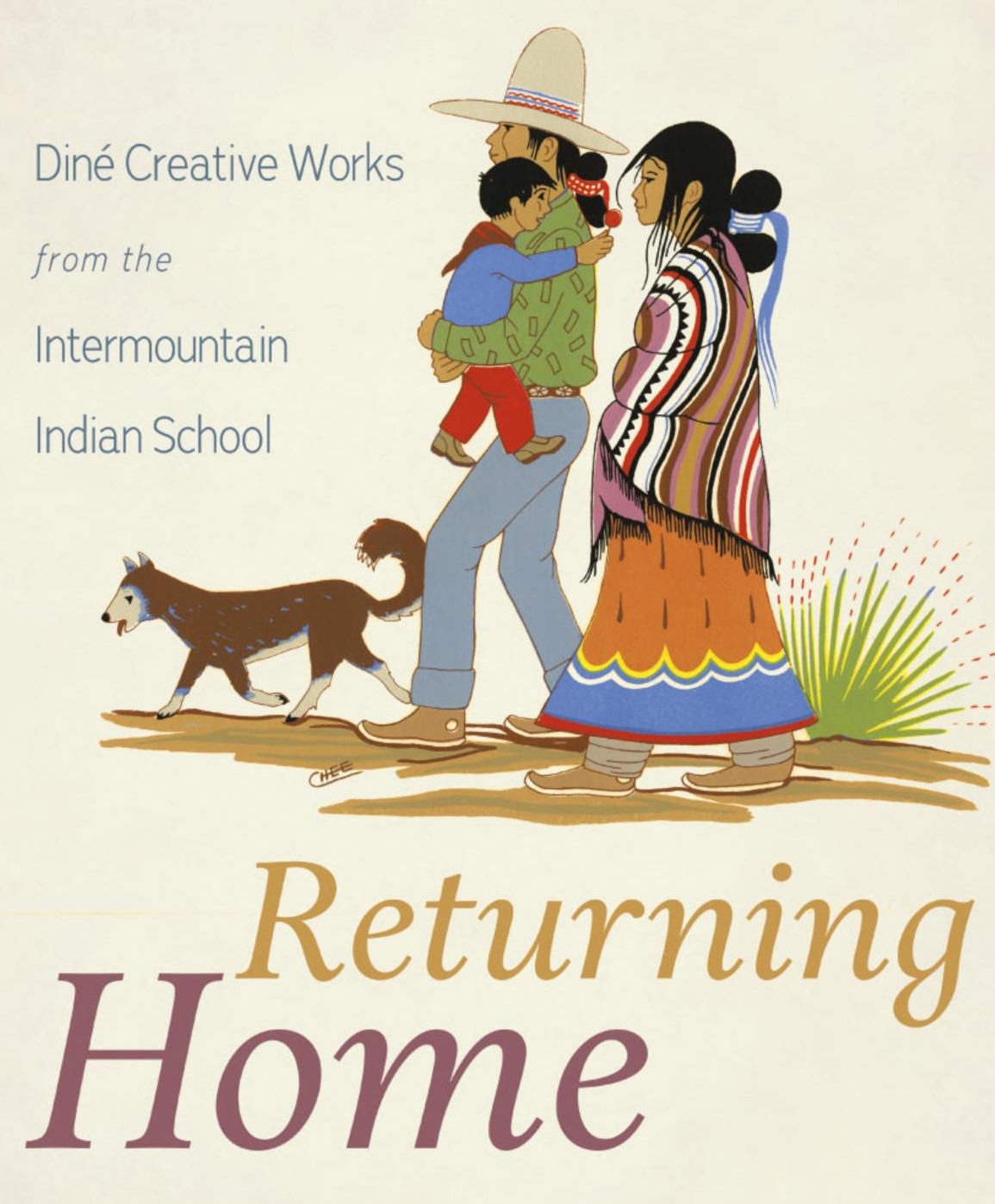Date: November 29, 2021 (Season 3, Episode 14: 102 minutes long). Click Here for the BuzzSprout version of this Speak Your Piece episode. The above illustration is a cropped image of the cover of Drs. King, Taylor and Swensen’s book Returning Home: Diné Creative Works From The Intermountain Indian School (2021). The art featured is by Diné artist Robert Chee (1937-1971) known also as Hashke-Yil-Cale. Courtesy of University of Arizona Press. Are you interested in other episodes of Speak Your Piece? Click Here.
Podcast Content:
This episode of Speak Your Piece is about literary and creative expressions–works of poetry, essays, art and journalism–produced by Diné or Navajo junior high and high school students, and older students ages 18 to 24, who returned to complete their high school years at IIS. For nine months of each year, most of the school’s student body boarded chartered buses that took them to and from Brigham City’s Intermountain Indian School (IIS: 1950-1983). Living hundreds of miles from their families and communities, these children, some as young as five years of age, lived in dormitories and attended school on a sprawling and somewhat isolated north Utah campus.
Our guests for this episode: Farina King (Diné, historian, University of Oklahoma), Mike Taylor (English and Native American Studies, Brigham Young University) and James Swensen (photographic/art historian, Brigham Young University). Each read their favorite poems and excerpts, shared personal insights and discoveries, and expressed their awe and wonder, at the youthful creative output covering relationships, youthful love, protest, longing for home, homelands and family, and above all else, their affirmations of Indiginous knowledge and identity.
Podcast Episode:

The IIS campus, which was managed by the Bureau of Indian Affairs, remains partially standing, located in the southeast corner of Brigham City, just below the incline to Sardine Canyon on US Route 89. You can look eastward, from the once spralling campus, and still see an oversized “I” painted white on the mountainside. Tens of thousands of Navajo students, from across the Intermountain West, attended what was for its time, the largest Indian boarding school in the USA. During the school’s last ten years (ca. 1973-1983) the school became an Inter-tribal facility, inviting students from many different tribes and nations.
The book is a second act, after a 2019 traveling exhibit entitled: “Returning Home: The Art & Poetry of Intermountain Indian School, 1951-1984,“ which was offered at the BYU Museum of Art (Provo, UT) and the Museums on Navajo (Tuba City, AZ). This richly illustrated book describes, interpretes, and most importantly, amassing hundreds of Diné student works in this one volume. This book expands the known canon of mid 20th century Indigious art, literature and journalism. King, Taylor and Swensen’s analysis, and their gathering of youthful Diné creative works, are both nationally and regionally significant, for Indigious Studies, American history, and our nation’s interest in seeking out, and making publically available, more inclusive works in the Humanities and in the arts.
Finally, we also offer a shout out to former BYU student Terrance Wride (whose work is included in the book’s appendices) as it was Wride who brought the bountiful archival holdings from the Intermountain Indian School to the authors’ attention.

Bio: Dr. Farina King–a citizen of the Navajo Nation–is the Horizon Chair of Native American Ecology & Culture, and an Associate Professor of Native American Studies at the University of Oklahoma. She received her Ph.D. at Arizona State University in U.S. History. King specializes in twentieth-century Native American Studies, especially American Indian boarding school histories. She is the author of The Earth Memory Compass: Diné Landscapes and Education in the Twentieth Century, and co-author of Returning Home: Diné Creative Works from the Intermountain Indian School.
Bio: Dr. Michael P. Taylor is assistant professor of English and associate director of American Indian studies at Brigham Young University. He currently holds the Butler Young Scholar Award from the Charles Redd Center for Western Studies. He is coauthor of Returning Home: Navajo Creative Works from the Intermountain Indian School. His scholarship has appeared in such journals as American Quarterly, Native American and Indigenous Studies, and Modernism/modernity. His research engages Indigenous archives to expand Indigenous literary histories and support community-centered initiatives of Indigenous resurgence.


Bio: Dr. James R. Swensen is an associate professor of art history and the history of photography at Brigham Young University. His research interests include documentary photography, American photography, and the visual representation of the American West. He is the author of Picturing Migrants: The Grapes of Wrath and New Deal Documentary Photography (Univ. of Oklahoma Press, 2015), In a Rugged Land: Ansel Adams, Dorothea Lange, and the Three Mormon Towns Collaboration, 1953-1954 (Univ. of Utah Press, 2018) , which received the Best Book Award from the Utah Historical Society (2019), and co-author of Returning Home: Diné Creative Works from the Intermountain Indian School.
Additional Resources & Readings:
- To buy a copy of Returning Home click here to go to the University of Arizona Press website.
- Jon Reed, “‘Some Lost Their Lives, Some Found Their Lives’: Remembering The Intermountain Indian School,” KUER 90.1 PBS Utah, August 6, 2021
- C. J. Guaddarama, “Uncovering the Mysteries of the Intermountain Indian School,” Folklife, Smithonian Center for Folklife Cultural Heritage, November 15, 2018 | CJ Guaddarama
Do you have a question or comment, or a proposed guest for “Speak Your Piece?” Write us at “ask a historian” – askahistorian@utah.gov

